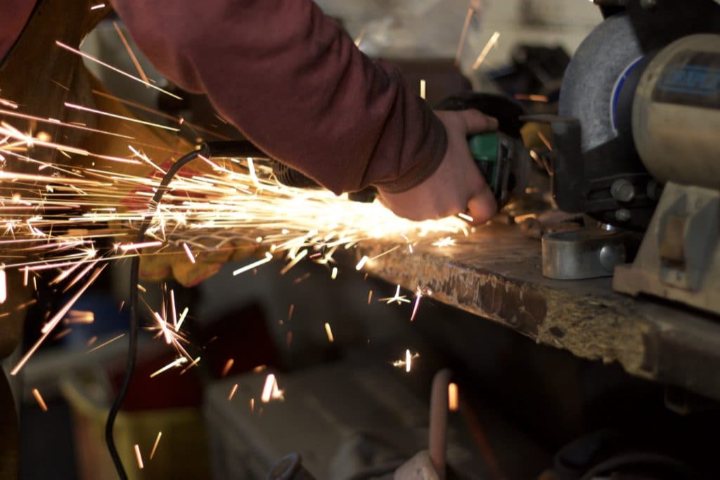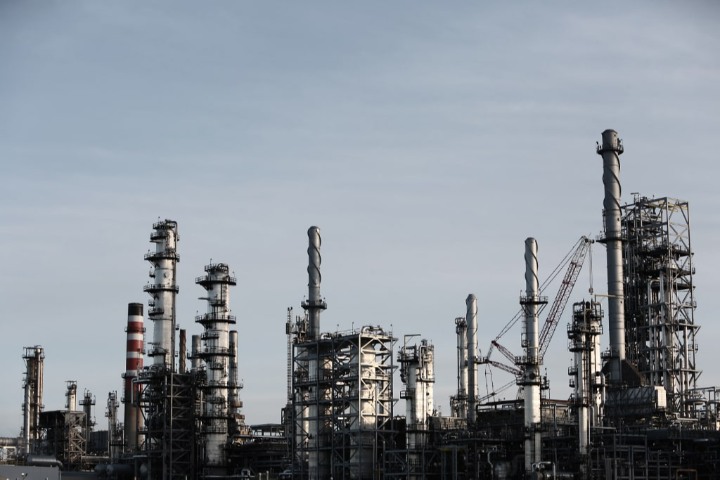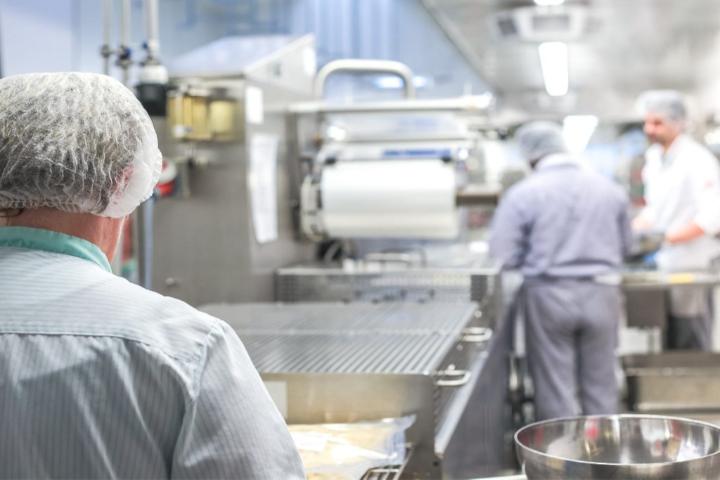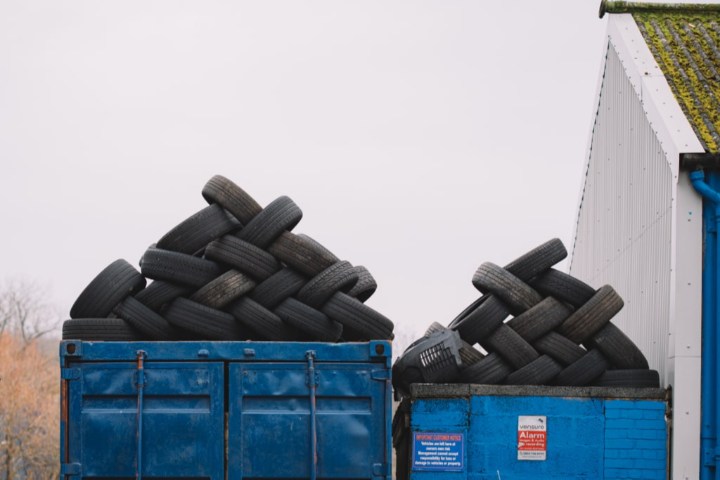EPDM
EPDM (Ethylene Propylene Diene Monomer) is a synthetic rubber. Due to its long list of desirable properties, EPDM is a popular material for industrial use. Benefits of EPDM
With a wide array of shore hardness – from 30 to 90 – it’s an excellent material for bumpers, fenders, gasket and sheet products. EPDM offers excellent resistance to heat, ozone, steam, weather and – in addition to this – is also an electrical insulator, making it ideal for a range of products in a host of differing situations. Given the longevity and competitive pricing of EPDM products, this is one of the most used materials in the industry.
Weaknesses of EPDM
The biggest disadvantage of EPDM, when considering it as a material, is its behaviour with many oils and chemicals. EPDM can be prone to swelling and degradation when in contact with oils, fuels, acids and solvents, and would need replacing often in these environments. As a result, this would never be a product to use for seals that come into contact with these fluids, such as fuel or oil lines where we would instead recommend nitrile.

Natural rubber is a polymer of isoprene. Although natural rubber is not used extensively within industrial applications, due to a number of limitations in its properties and the cost - comparative to other longer-lasting materials such as EPDM - it still has its uses.
Benefits of Natural Rubber
Natural rubber is regarded as the most physically strong of elastomers, with high resilience and tear resistance, alongside good tensile strength and shock absorption.
Popular Natural Rubber Products
Rubber Conveyor Belts
Rubber Side Skirting
Bumpers and Fenders
Tubing
Sheet Flooring
Tyres
Weaknesses of Natural Rubber
In many scenarios, natural rubber lacks a number of typically required compatibilities, offered by other rubbers at a similar cost, meaning that it’s often disregarded in favour of better performing alternatives. Similarly to EPDM, natural rubber offers poor resistance to oils and fuels. Natural rubber will also degrade more quickly in outdoor applications, due to its weakness to ozone and a low tolerance for temperate changes/heating.

Neoprene
Neoprene is a synthetic rubber, produced by polymerization of chloroprene. Benefits of Neoprene
From a material perspective, neoprene exhibits good chemical stability and maintains flexibility over a wide temperature range, making this is an excellent choice for a range of rubber products and components. It’s resistant to ozone, sunlight and a number of fuels, and offers good resistance to water as well as many chemicals.
Popular Neoprene Products
Water Resistance Gaskets and Seals
Hose Coverings
Vibration Mounts
Tubing
Wetsuits and Dry Suits
Sports and Medical Supports
Weaknesses of Neoprene
It is generally degraded by strong oxidizing acids and nitro hydrocarbons, so isn’t suitable for all liquid sealing applications. Due to its wealth of resistances and stability in many areas, Neoprene is often more expensive than other suitable alternative rubbers and - depending on the usage – may be considered overkill for the requirement.

Nitrile
Nitrile or 'Nitrile Butadiene Rubber' is used in a number of goods, including footwear, adhesives, sealants, sponges, expanded foams, floor mats and a range of other products.Benefits of Nitrile
Nitrile is often used in automotive, industrial, manufacturing and aeronautical applications, due to it's excellent resistance to a wide range of oils and fuels. Nitrile’s capability of being able to handle a range of temperatures, from as low as -40 c, makes it an excellent material for aeronautical applications, whilst it’s chemical and fuel resistance also makes it an excellent choice for fuel/oil line gaskets and seals.
Popular Nitrile Products
Oil Seals
O Rings
Gaskets
Weaknesses of Nitrile
Whilst nitrile does have an array of positive properties and uses, it does suffer from weaknesses including a higher than average cost, as well as a weakness when exposed to ozone, sunlight and limited resistance against high levels of heat and flames.

Silicone
Silicone rubber is a rubber-like material composed of silicone—itself a polymer—containing silicon together with carbon, hydrogen, and oxygen. Silicone rubbers are widely used in industry, and there are multiple formulations. Silicone rubbers often contain fillers to improve properties and/or reduce cost. There is a wide range of silicone hardness’ available, from 25 – 90 shore.Benefits of Silicone
The biggest benefits of using silicone as a material, include excellent resistance to a range of temperatures – from as low as -50°c up to 250°c – excellent tensile and tear strength, as well as electrical insulation, water and UV resistance.
Popular Silicone Products
Food Grade Seals and Gaskets
High-Temperature Hosing
High-Temperature Seals and Gaskets
Vacuum Tubing
Weaknesses of Silicone
Where silicone performs excellently when in contact with a number of elements, it doesn’t offer the strength that a number of alternatives offer. It has a comparatively weak resistance to tearing and abrasion when compared to EPDM for example.

SBR
SBR (Styrene-Butadiene Rubber) is a synthetic rubber derived from styrene and butadiene. These materials have good abrasion resistance and good ageing stability when protected by additional additives. SBR is available in a smaller range of hardness’ when compared to alternatives, from 60 to 80 shore being the typically available variants.Benefits of SBR
SBR has some desirable qualities, including good physical strength, in addition to strong tear and abrasion resistance. It’s suitable for high volume, short last products - owing to the low price point - but is rarely used in industrial settings, where a component requires resistance to a number of elements.
Popular SBR Products
Recycled Rubber Tyres
Cheap Shoe Soles
Impact and Wear Pads
Cable Seals
Washers
Weaknesses of SBR
Given alternative materials and prices, such as EPDM and Neoprene, it’s often difficult to recommend this material for many applications. It has a number of poor attributes, including poor performance and reaction when in contact with chemicals, ozone, oils, acids, greases, fats and a number of hydrocarbons and – in an industrial setting – would require replacing far more often than other materials. Whilst it may initially be a cheaper product to manufacture components from, the short lifespan of the product will, more often than not, result in it being a false economy for commercial buyers.
About Walker Rubber
If you’re unsure of which material will work best for your application, simply complete our contact form with some further details of your product requirement, and one of our experts will be in touch to assist you further. Walker Rubber is a UK based rubber manufacturing specialist, with the ability to create Bespoke Extrusions, Gaskets, Mouldings and many other services.
To talk to us about your business’s needs, get in touch.